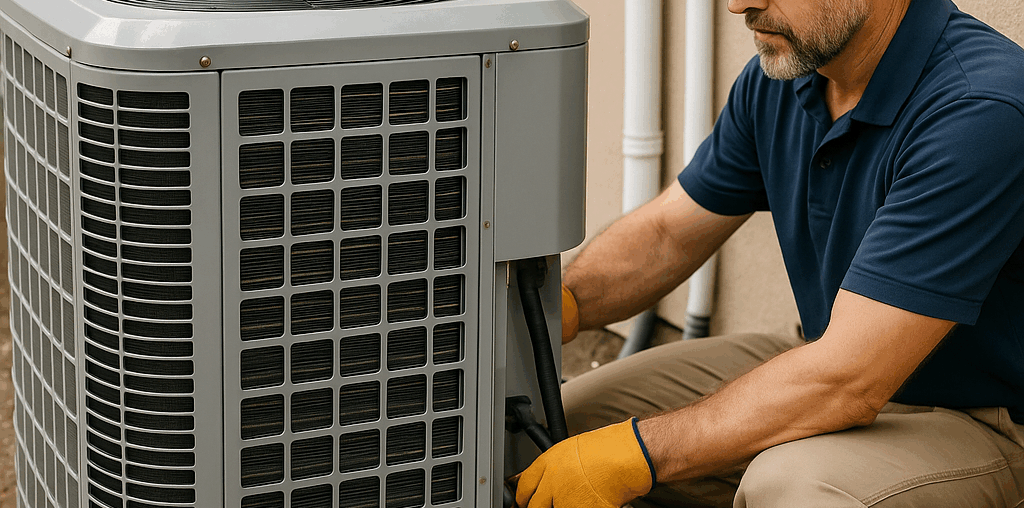Introduction: The History of HVAC Installation
HVAC systems have come a long way over the past decade. The HVAC business is shifting from conventional thermostats to intelligent climate control. Application of Artificial Intelligence (AI) and the Internet of Things (IoT) is revolutionizing the way these systems are installed and operated.
HVAC systems today are no longer machines but intelligent systems. The development of AI and IoT has introduced a new age of precision, efficiency, and flexibility to heating and cooling systems. These technologies allow HVAC systems to respond immediately to atmospheric conditions and user behavior, delivering comfort and efficiency.
What Is AI and IoT in HVAC Systems?
Artificial Intelligence for HVAC are systems that can process information, identify patterns, and make decisions independently in order to optimize performance. This could mean altering setting depending on the number of people, outside temperatures, or historic patterns of usage. AI makes HVAC systems intelligent and responsive without human intervention.
IoT is about connectivity. It is about devices such as smart thermostats, humidity sensors, and air quality sensors that communicate with each other and with users via apps or cloud services. When AI and IoT are integrated, HVAC systems can run effortlessly and intelligently, providing greater control and energy management.
How AI is improving HVAC installation and performance
AI is also transforming the installation and maintenance of HVAC systems. During installation, AI software can examine house plans, identify airflow problems, and suggest ideal system configurations. This eliminates guesswork and guarantees accurate placement and calibration.
Once installed, AI algorithms can learn the way in which a building warms and cools. For instance, they can learn that a particular room warms up in the afternoon and can reallocate airflow. Over time, such a system can fine-tune its performance to be more energy-efficient and comfortable, and require fewer manual adjustments.
The Role of IoT in Real-Time Monitoring of HVAC
IoT-based HVAC systems allow users to visualize what’s going on with the home climate and how the system is performing. With smart thermostats, users can adjust the temperature from their mobile devices or set schedules based on when occupants are present. Sensors installed around the building can monitor temperature, humidity, and air quality to maintain the indoor climate.
Additionally, IoT devices can track energy consumption and alert if there is a fault or if something is not performing optimally. This assists owners in identifying issues early and preventing costly repairs. The data collected over time also assists in identifying patterns that can inform future decisions for conserving energy and enhancing systems.
Advantages of Using AI and IoT in HVAC Installation
- Energy Efficiency: Systems automatically adjust to minimize waste and energy expenditure.
- Predictive Maintenance: Pre-failure warnings are received, which saves money and prevents breakdowns.
- Custom Comfort: Tailored climate control according to user use and room function.
- Remote Access: With smart devices, you can control your HVAC system from anywhere.
- Environmentally friendly: Save energy to meet sustainability goals.
- Data Insights: Long-term usage and performance data enable users to make better decisions.
Challenges and Considerations
- Data Privacy: Intelligent systems gather and retain usage information, leading to privacy and data management issues.
- Initial Investment: The initial investment in smart appliances and AI-based HVAC systems may be higher.
- System Compatibility: Older HVAC systems may not be compatible with newer AI and IoT technologies.
- Technical Complexity: Putting in and setting up may need skilled workers who know both HVAC and IT systems.
What This Means for Installers and Homeowners
HVAC technicians are transforming their profession. Technicians must now learn about networking, AI software, and smart controls, as well as traditional mechanical systems. For home owners, this means having more control, being able to save money, and feeling more secure—if they are receptive to new technology.
These are not developments on the horizon, but developments already underway. With manufacturers offering AI-enabled devices and smart home capabilities now a norm, incorporating these technologies is not only an option, but a necessity for smart homes of the future.
Conclusion: The Future Is Here Now
AI and IoT are changing the way HVAC systems are installed and operate. They are innovating new means of staying comfortable, efficient, and in command. They will make HVAC systems smarter, less expensive, and more environmentally friendly as they expand. Homeowners and professionals must stay abreast of these trends to have a more comfortable experience at home in the days to come.




